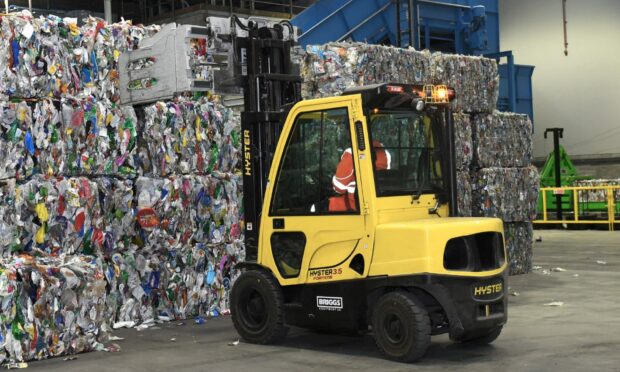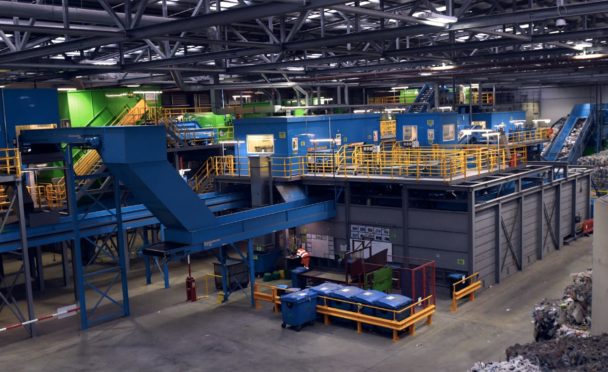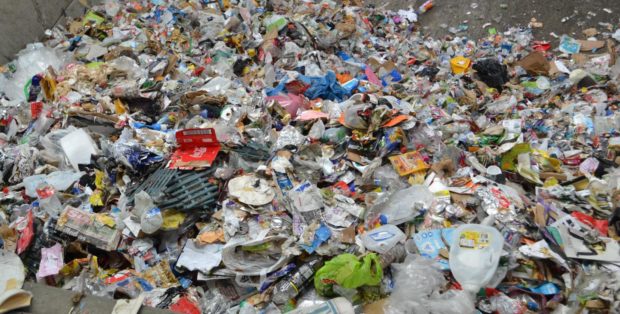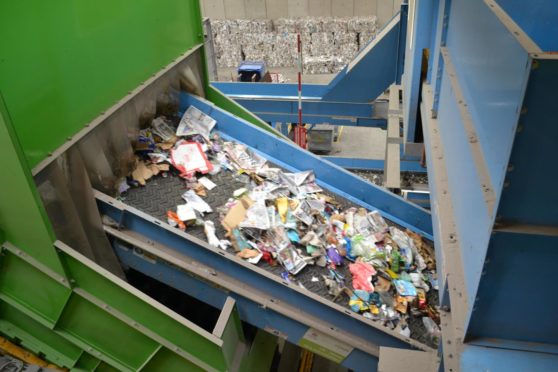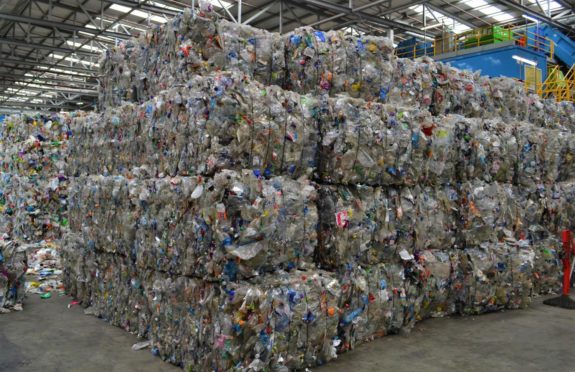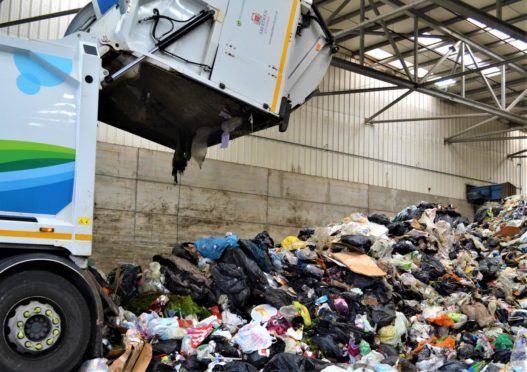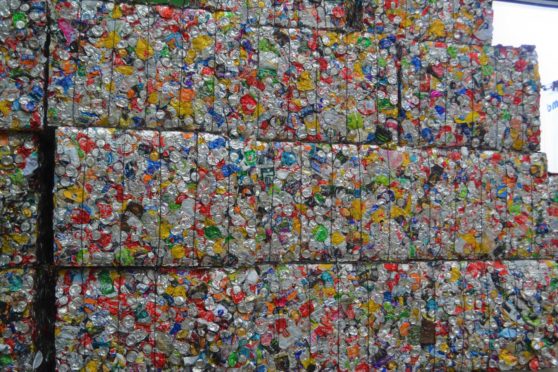A couple of months back, when taking out my blue recycling bin late one evening, I thought to myself, what now? What happens to the stuff we have carefully placed in there?
We’ve all read the horror stories of some companies in England selling and shipping recycled plastic out to the likes of Malaysia where it’s often dumped. Heart-breaking on so many levels. Thankfully that’s not the case in Scotland.
I wanted to find out more and got the ball rolling by first speaking to councillor Peter Argyll. I was then put in touch with numerous people in various council departments and also spoke with SUEZ, the company involved in partnership with waste management.
It has to be said, many were initially wary. It took emails, phone calls and numerous questions about what I was up to. However, once I had convinced them I was not out to write a column that would try and trip them up somehow, all involved could not have been more helpful.
The Altens East Recycling and Recovery Facility is a £27 million joint facility between SUEZ and Aberdeen City Council. It opened in 2017 and is capable of processing four tonnes of mixed recyclable material in under 12 minutes. This state-of-the-art facility not only takes material from Aberdeen City, but also Aberdeenshire, Angus and the Highlands.
I am aware that there are different recycling systems in place for our various councils. It’s all a bit of minefield really, so forgive me if when quoting figures or rules here that it may be different for the area you live in.
After a detailed prep talk about safety, which is paramount here, I got kitted out in protective clothing and we began our tour. Stepping into the main area, it was noisy. I initially struggled to hear my guide, SUEZ production operations manager Colin Forshaw, over the constant roar of various machines, so I admit to taking out my ear plugs.
Conveyor belts were under me, beside me, overhead, all sorting and scanning items. Glass goes one way, paper the other, plastic another. Giant magnets snatch cans and send them hurtling off to their destination. Be it cardboard, paper, tin cans, glass, plastics or cartons, there is a unique process for each.
How to sum it up? Impressive. Utterly impressive.
“I could stand here and watch this for hours,” I shouted to Colin. It really was fascinating.
Machines aside, the skill of the individual workers involved impressed me. Before our rubbish even gets into the main system, these workers expertly try to fish out the wrong stuff folks have thrown into their recycling bins. Please take note – broken electrical gadgets should not, under any circumstances, go into recycling bins, for in here they can and do end up breaking extremely expensive machinery. Take such items to your local recycling centre instead.
The message pushed to me time and time again was: “Please tell your readers to recycle properly.”
In fact, there’s much we can do before we even have to consider recycling – as in not producing unnecessary waste in the first place. Buy less, re-use, repair, then ultimately recycle.
The latest recycling figures I have are: Moray and Angus are most impressive at 59% each. Aberdeenshire and City, not so, both are under 50%. We all have recycling bins – these figures should be as near to 100% as is humanly possible. No excuses.
It seems many households do not us their little green food bins enough either. Come on everyone, it’s not difficult. Another column coming on food bins in the near future.
As for the tons of clothes thrown away, that’s an environmental disaster. And I’d bet that lots of it is still perfectly wearable. Please donate your unwanted clothes to charity, there are numerous options everywhere to do this, from local charity shops to clothes recycling points. It just makes no sense to bung them in a black bin and throw them away.
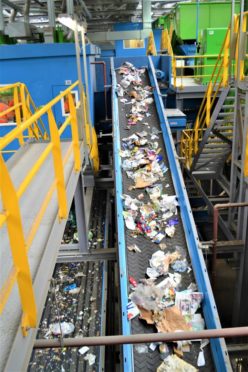
I’ve read my local council’s waste strategy plans for up to 2023. They are bold and impressive. However, they cannot and will not be achieved unless we all do our bit.
What really interests me is the new and approved deposit return scheme. This will capture plastic bottles, glass and metal cans.
Form July 2022, we will all pay an extra 20p when we buy a single-use container. When finished with it, we return said item to one of the 17,000 collection points nationwide, and we get our 20p back. No doubt some will find a reason to complain, but with the aim of this scheme being to capture an impressive 90% of all drinks containers sold and thus then recycled, it gets my vote.
I have to say that it was extremely satisfying to see the end product in this building. Bales upon bales of recycled plastic and tin cans, all stacked and ready to be shipped out, sold and re-used as new products. Brilliant.
However, near the end of my tour, I got a stark reminder of the challenge SUEZ and our councils face. I was taken to watch a garbage truck empty its load. It was from Aberdeen City households. Not items from recycling bins, but from black landfill bins.
Out spilled countless black bin bags on to the floor. What was in them? Everything. Glass, clothes, shoes, rotting food and all manner of plastic, of course. I could see the look on the faces of those around me. See my photo here. On quick inspection, I was told that approximately 50% of this could easily and effortlessly have gone into blue recycling bins.
Why didn’t it? I don’t know. It beggars belief.
Everyone has a bin to recycle. If you can dump your rubbish in your black bin, you can surely take an extra few minutes to sort it and pop the recyclable goods into your recycle bin. A staggering example of laziness, or couldn’t-give-a-damn-ness.
A landfill ban is due to come into force across Scotland in 2025. I was mightily pleased to hear that, but then thought -what on earth will we do with all this stuff? Especially when so many can’t even be bothered to recycle?
Well, we have a solution, and it’s a very good one. Currently, councils are working together to build an “energy from waste” facility to process non-recyclable waste. Based in Aberdeen, the plant will go live in 2022.
The “energy from waste” plant will process all non-recyclable waste which will be turned into electricity for the national grid. Genius. It should be compulsory in every council. In every country. The world over.
If countries can spend billions on nuclear weapons, armies and war, surely we can afford more of these planet-saving inventions.
But as I was told on more than one occasion, that, despite this wonderful up and coming project, is not an excuse not to recycle. It’s always best for our planet to first use less, re-use where possible and ultimately when finished with a product, always recycle.
We’re often very quick to pass the buck. It’s human nature I’d guess. However, our rubbish is not the council’s problem. It’s not a SUEZ problem. It’s not someone else’s problem. It’s our problem. Each and every one of us.
I left the recycling plant very impressed, yet also with some frustration, for despite the phenomenal efforts I’d seen there, far too many people still do not recycle. Without this state-of-the-art facility and heroic efforts by all involved, our countryside would choke with garbage.
The message that kept coming back to me, all through my tour from SUEZ members and council staff alike, was the following.
“We can only do so much. We need each and every individual to do their bit. We need to get the message across. Help us do that.”
I’m trying to do just that.
What happens if you don’t recycle?
Well, far away from this gleaming ultra-efficient plant is something not so pleasant. This is what happens when you can’t be bothered to recycle. This is where it ends up.
And it will remain there near indefinitely.
And it’s not pretty.
